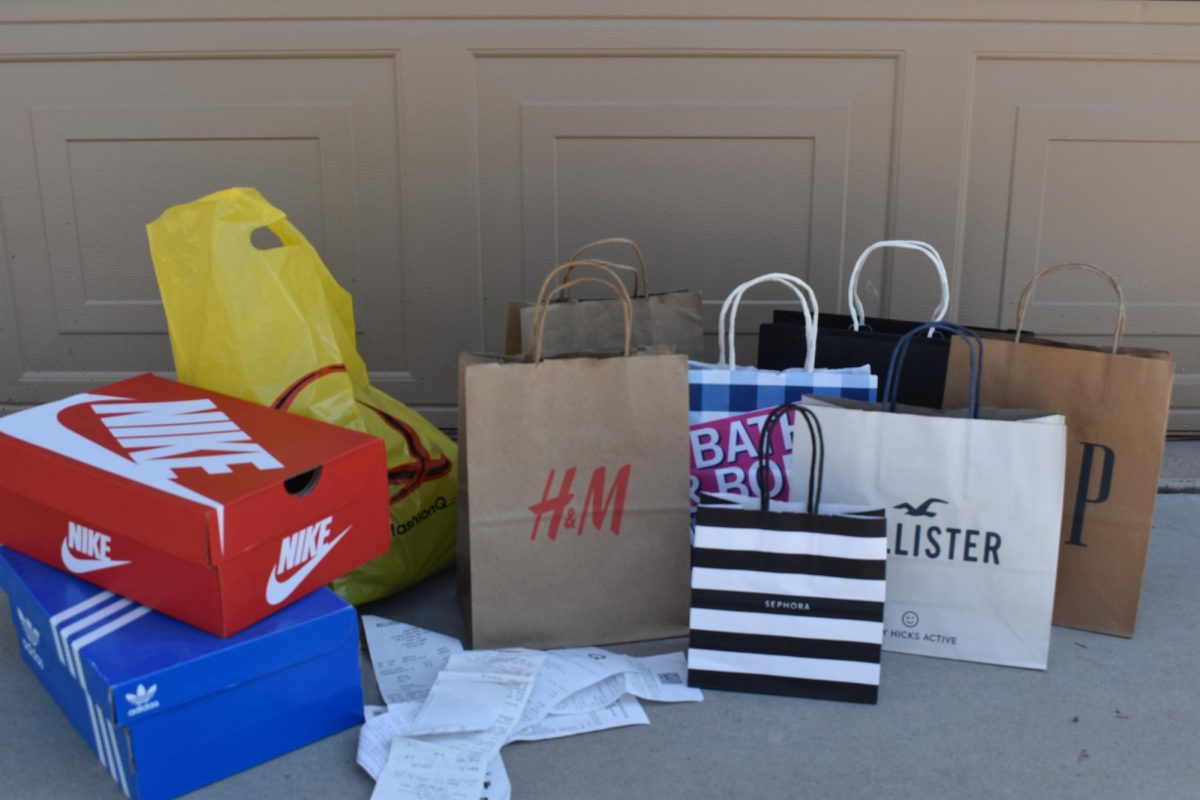Throughout the two weeks before school starts, the mall is flooded with hundreds of teenagers trying on piles of clothes and flitting in and out of stores holding armfuls of shopping bags. This back-to-school shopping phenomenon has been around for several decades, where students rush to stock up on supplies and clothes for the upcoming school year. More recently, however, the term has been shifting and is used lightly to describe what seems like an excuse for overconsumption.
Back-to-school shopping was originally a concept to purchase school supplies and appropriate attire to ensure success during the upcoming school year. In elementary school, students are often given a list of school supplies on a sheet of paper, indicating what they are expected to purchase to ensure they have the necessary materials to learn. Elementary students crowd into Target, Staples, Kohl’s, and Walmart to purchase backpacks, highlighters, crayons, composition notebooks, and more supplies to use in their classes. As students shift into their teens, the concept also shifts to accommodate proper attire and clothing. Besides restocking on outgrown clothes, this is the one time of the year when students go to buy clothes that would make them feel comfortable and confident in a school environment. Overall, the point of back-to-school shopping is to ensure materialistic disadvantages do not get in the way of academic success.
However, this phenomenon has spiraled into a category beyond school. When using the term ‘back-to-school shopping’ among teens, it usually refers to a massive shopping spree to get on new fashion trends and buy brand-new products. Although shopping for clothes and items is not necessarily detrimental, teens are increasingly using back-to-school shopping as an excuse to buy unnecessary products. According to the National Retail Federation, the average back-to-school spending for a K-12 student is $858.07. Students spend wastefully to pile up on new jeans and shoes, iPhones, and makeup ‘for the new school year.’
Small traditions like back-to-school shopping essentially foster a culture of extreme overconsumption and a cultural norm based entirely on material possessions. Some of the spending may be necessary, but only to an extent. It is important to note that many teenagers spend on these ‘school supplies’ because they want to fit in with their peers. It is completely understandable to have the desire to begin the school year with a fresh persona. Furthermore, this tradition fosters a spirit of excitement before students go into their new school year. However, with the current trends, back-to-school shopping sparks an issue by driving an ongoing cycle of overconsumption.
Businesses then feed off this concept of overconsumption to drive up sales. Back-to-school shopping is a large tradition across the country, making it the second largest shopping season after the winter holidays. Businesses play on this to raise capital, even by stretching the back-to-school season to accommodate months as early as June. To further inflate the issue, social media marketing makes overconsumption even more tempting. Brands often partner with content creators to make their products more relatable to the general audience. From exposing teens to new products to driving up sales, influencers now play a heavy role in driving students to spend on different back-to-school products. In reality, these influencers paint an unrealistic portrait of life that is out of budget for most teens in America. However, teens view this as normal: spending hundreds of dollars on new products and overturning their entire closet to stock up on new clothes. The online platforms play on the psychology of the youth’s brains, driving a desire for materialism, pleasure, and status to an extent.
Simply knowing that back-to-school shopping is a ‘scheme’ of businesses can allow teenagers to limit their spending to what they deem necessary. It is essential to emphasize the importance of having a budget for shopping, so that families are not harmed by overspending. There are also healthier alternatives to stocking up on new products, such as thrifting and buying quality second-hand items. With careful considerations and planning this school year, teens can successfully avoid the dilemma of back-to-school shopping.



